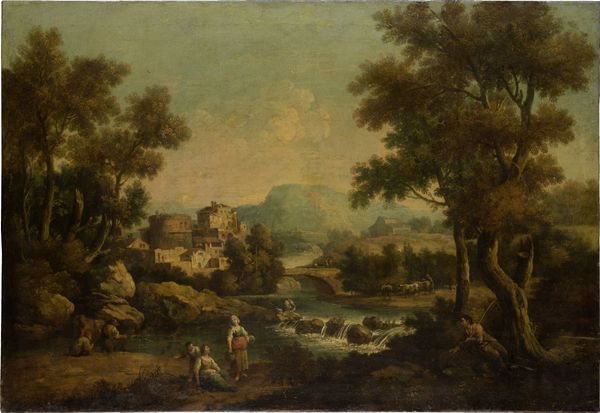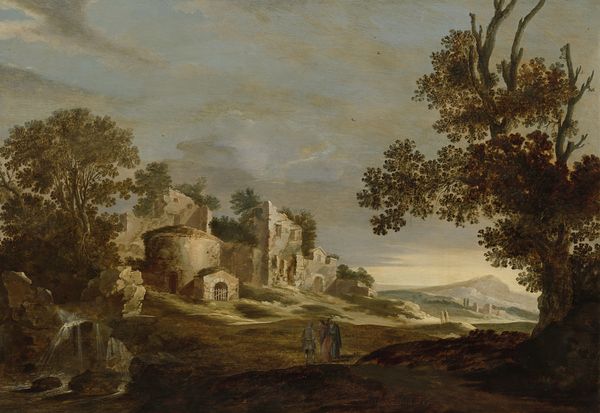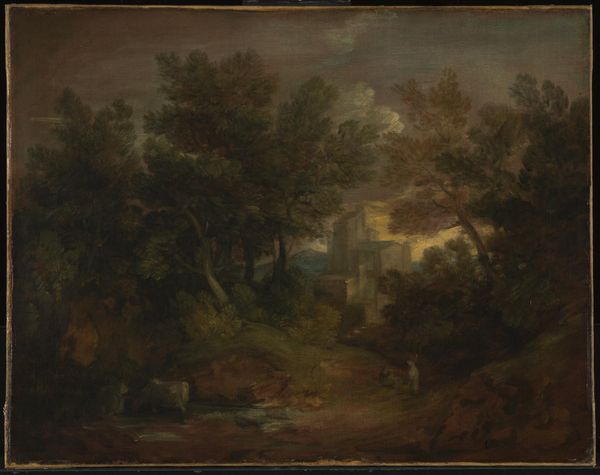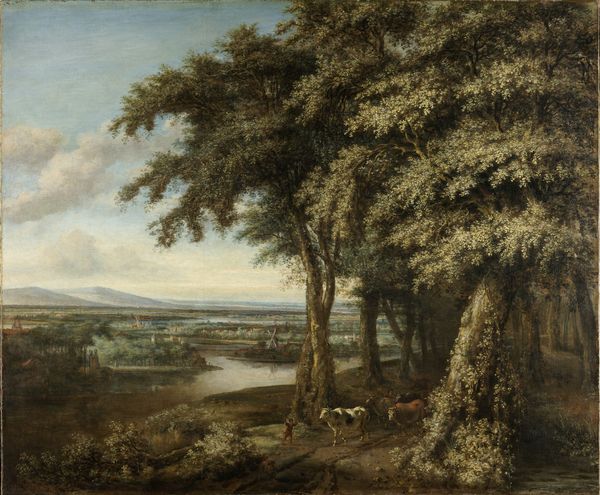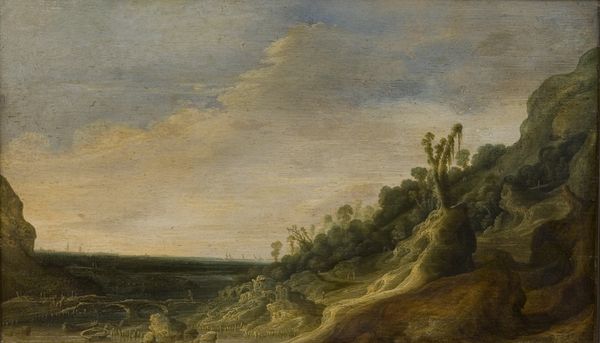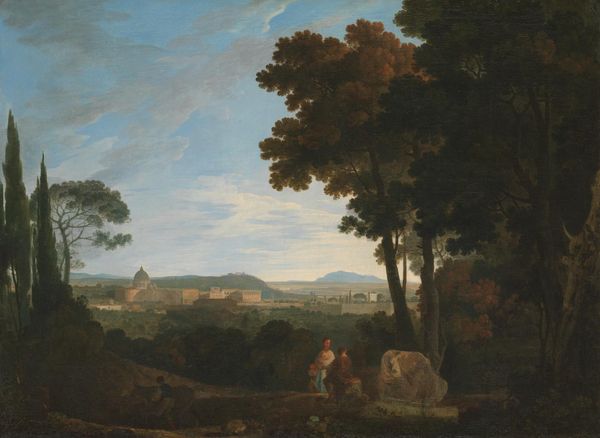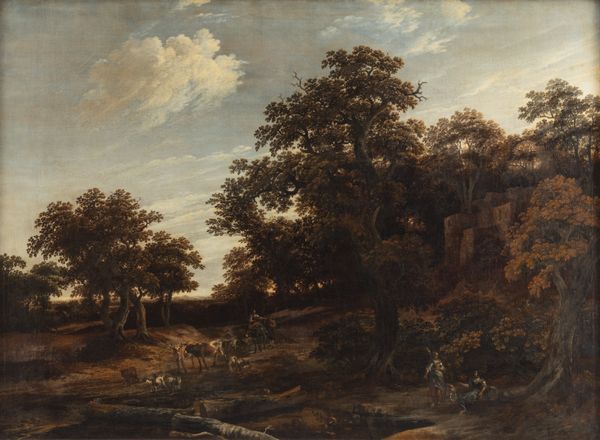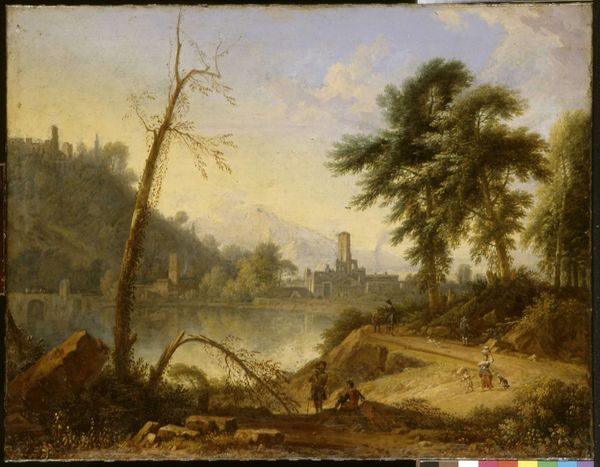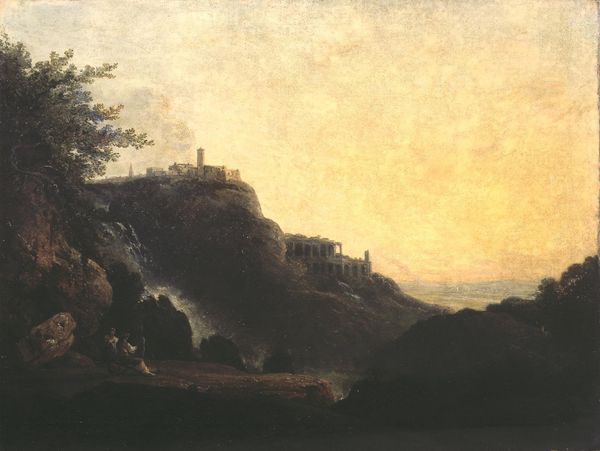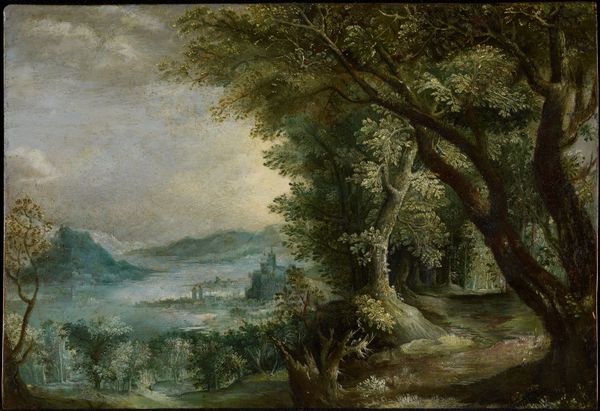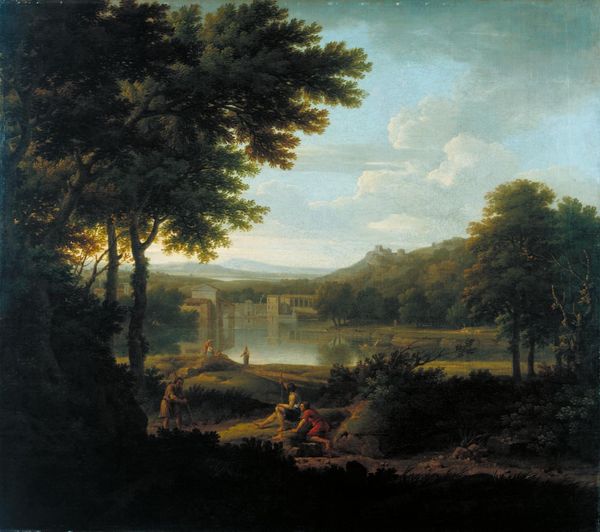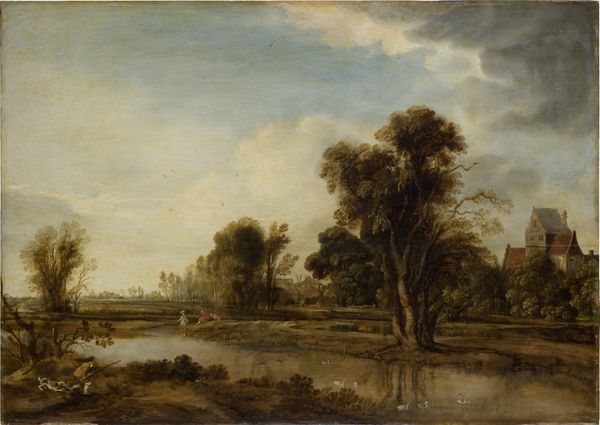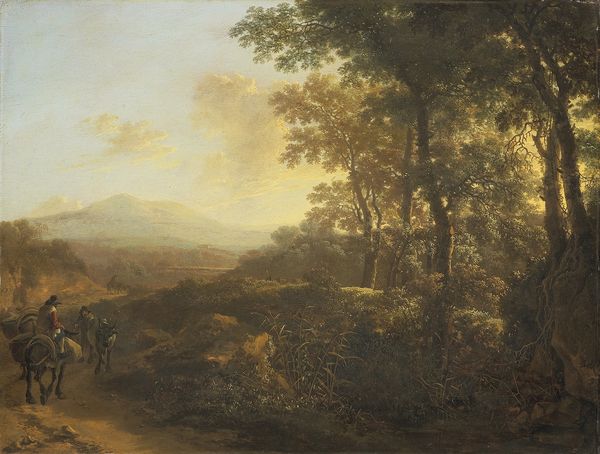
Dimensions: 41.0 x 52.0 cm
Copyright: Public Domain
Curator: We're standing before Paolo Anesi's "Landscape near Rome," painted around 1741. Editor: Oh, this feels... dusty, almost sepia-toned. It has that quiet, romantic ruin kind of vibe, like a memory half-faded. Curator: Indeed. Anesi masterfully uses oil on canvas to capture a very specific atmosphere, layering shades of greens and browns. Note how the composition guides the eye—from the dark foreground, across the winding path, toward the soft, distant cityscape. The ruin adds a dramatic counterpoint to the idyllic valley. Editor: The ruin's placement feels intentional, doesn't it? It is not just a backdrop; it adds weight and mystery. But I must admit I keep imagining a lone traveler in search of something...lost, maybe. Or maybe that's just my mood today. Curator: Such subjective readings are, of course, valid. Structurally, the artist utilizes contrasting light and shadow to create depth. The interplay between the solid, angular forms of the ruin and the organic curves of the trees produces an elegant tension. We can see how these techniques position Anesi firmly within a specific visual tradition in the 18th Century. Editor: Maybe. To me the lone figure riding that little mule hints at humanity's journey. Plus that hazy far distance! What story waits to unfold out there, huh? The lack of super crispness kind of softens everything into pure reverie. Curator: The lack of definition in the background might speak to an engagement with picturesque aesthetics, foreshadowing later romantic sensibilities. Anesi presents a carefully mediated vision. Editor: Sure, but art always offers an opportunity for meditation on a world that flickers, sometimes disappears completely beyond the horizon. Curator: I agree—to grasp the structured relationships in an artwork and embrace its profound capacity to resonate with individual viewers need not be seen as distinct. It is how artworks achieve enduring meaning. Editor: Precisely. Thanks for illuminating things with your analysis! It got me to reflect further on these half forgotten dreams in the painting!
Comments
No comments
Be the first to comment and join the conversation on the ultimate creative platform.
